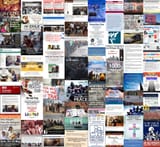>>512022012 (OP)
Someone like Jesus had to exist, not as a made-up myth, but as a living answer to something etched deep in the human psyche: the ancient longing for a God who doesn’t reign from a throne but suffers on a cross, who washes feet instead of wielding power. Across cultures and centuries, humanity awaited a figure who would embody divine love through sacrifice, one whose crucifixion would shake the soul more than domination ever could. His story, foretold in fragments, mirrored in myths, echoed in dreams, was bound to break into history because it speaks the language of our deepest ache: for redemption, for meaning, for a God who knows our suffering and reveals the true logos of love.
We see this pattern even in modern myths — Neo in The Matrix, the chosen one who awakens, dies, and returns transformed. Or Frodo, bearing the unbearable burden. Or Harry Potter, walking into death willingly. These stories aren’t just fiction; they’re echoes of the hero archetype, the redeemer. Echoes of the true myth that stepped into time. They resonate because our hearts recognize the shape: sacrifice, death, resurrection. It’s the gravitational pull of truth, drawing storytellers across time to the same center, the cross.
When he came, He didn’t ascend a throne; he was lifted on a cross. His coronation was a crown of thorns. Yet that image, God crucified, still pierces deeper than any empire or ideology. Nothing is more paradoxically powerful than omnipotence choosing weakness, infinity choosing wounds. He is the axis of the soul, where eternity touches time, where myth becomes flesh.
Even in a world of algorithms and deconstruction, his presence endures, not in institutions, but in the deep architecture of longing. The gospel isn’t just doctrine; it’s a pattern, a divine rhythm written into the fabric of the universe, waiting for us to awaken, to take up our cross and follow the one who walked through suffering into resurrection.
 8/2/2025, 10:29:38 AM
No.512022012
[Report]
>>512022199
>>512022254
>>512022307
>>512022373
>>512022446
>>512022772
>>512023107
>>512023301
>>512024454
>>512024804
>>512024830
>>512024961
>>512025253
>>512025281
8/2/2025, 10:29:38 AM
No.512022012
[Report]
>>512022199
>>512022254
>>512022307
>>512022373
>>512022446
>>512022772
>>512023107
>>512023301
>>512024454
>>512024804
>>512024830
>>512024961
>>512025253
>>512025281




